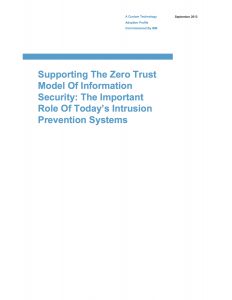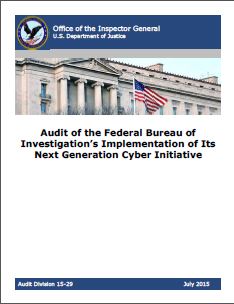 U.S. Charges Iran-linked Hackers with Targeting Banks and a N.Y. Dam (The Washington Post): According to this article, the Justice Department indicted seven hackers with ties to Iran for cybercrimes which included disrupting U.S. bank websites and hacking into a dam in Upstate N.Y. The article states that this is the first time the DOJ has charged people linked to a national government with attempting to disrupt critical U.S. infrastructure (note: In 2014 five Chinese military hackers were indicted by the DOJ for cyber espionage activities). In the 18-page indictment, the seven indicted were allegedly working for two Iranian companies, ITSec Team and Mersad Co., and they were allegedly doing so at the behest of the Iranian government, according to the article. The full article can be found here. Whereas a previous post related to the N.Y. dam is here.
U.S. Charges Iran-linked Hackers with Targeting Banks and a N.Y. Dam (The Washington Post): According to this article, the Justice Department indicted seven hackers with ties to Iran for cybercrimes which included disrupting U.S. bank websites and hacking into a dam in Upstate N.Y. The article states that this is the first time the DOJ has charged people linked to a national government with attempting to disrupt critical U.S. infrastructure (note: In 2014 five Chinese military hackers were indicted by the DOJ for cyber espionage activities). In the 18-page indictment, the seven indicted were allegedly working for two Iranian companies, ITSec Team and Mersad Co., and they were allegedly doing so at the behest of the Iranian government, according to the article. The full article can be found here. Whereas a previous post related to the N.Y. dam is here.
 Biggest Threat: Insider Breaches? (IBM white paper): In a white paper released in Sept. 2013, the most significant security breaches were insider misuse (at 36%), followed by loss/theft of data-bearing assets (35%). This paper goes on to extoll the virtues of a zero trust model (Forrester) that looks at threats holistically rather than focusing on internal vs. external threats. To that end, this paper pushes three concepts as being critical, (1) secure all resources, (2) implement restricted access controls, and (3) all network traffic is logged and inspected. The white paper is available here.
Biggest Threat: Insider Breaches? (IBM white paper): In a white paper released in Sept. 2013, the most significant security breaches were insider misuse (at 36%), followed by loss/theft of data-bearing assets (35%). This paper goes on to extoll the virtues of a zero trust model (Forrester) that looks at threats holistically rather than focusing on internal vs. external threats. To that end, this paper pushes three concepts as being critical, (1) secure all resources, (2) implement restricted access controls, and (3) all network traffic is logged and inspected. The white paper is available here.
[Editor’s note: this paper is admittedly dated; however the fact that it identifies the high incidence of insider threats while at the same time advocating for across the board security protocols that operate independently of whether or not a threat vector is external or internal is interesting. For a more current perspective, one might advance the notion of taking a data-centric approach where the data is viewed as the most important asset and in so doing you can safeguard the data which effectively obviates the need for evaluating whether a vulnerability is external or internal to an organization.]
- Meet the Ex-Army Hackers Trying to Save America from Blackouts (Forbes): In this article, Robert M. Lee, a former Air Force cyberwarfare officer discusses the Ukraine grid attack and notes that one of the alarming takeaways was that it appeared to be highly coordinated and thus Lee theorizes that this was performed by a military force. Lee goes on to say that the Ukraine attack should be an eye-opener for the U.S. which experienced nearly 300 intrusion events against critical infrastructure between October 2014 and September 2015, according to the article. The full article is here.






Leave a Reply